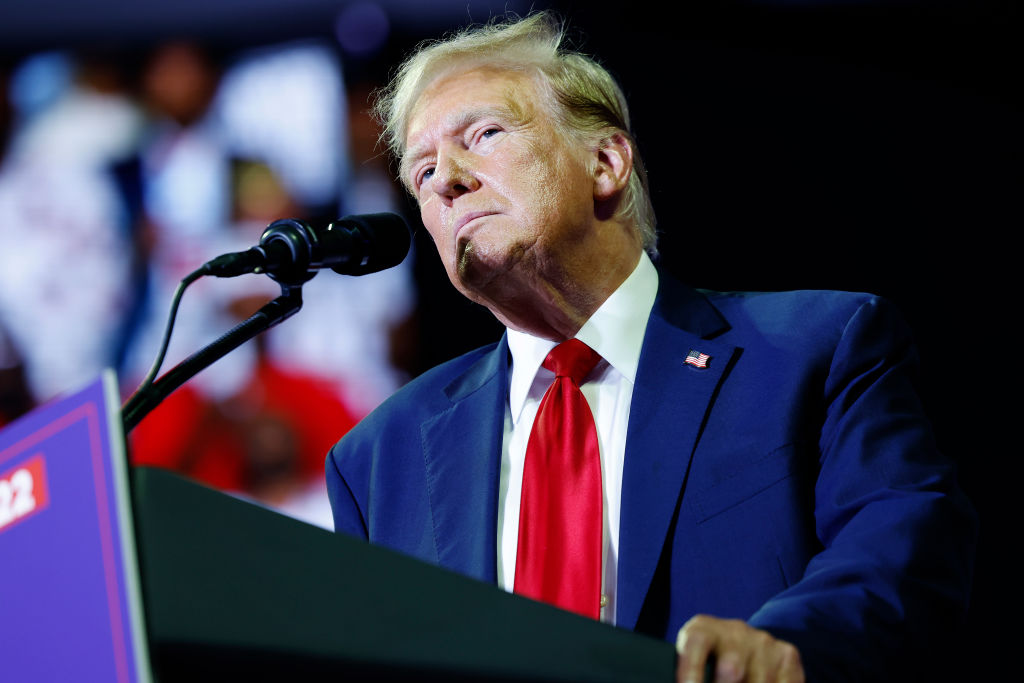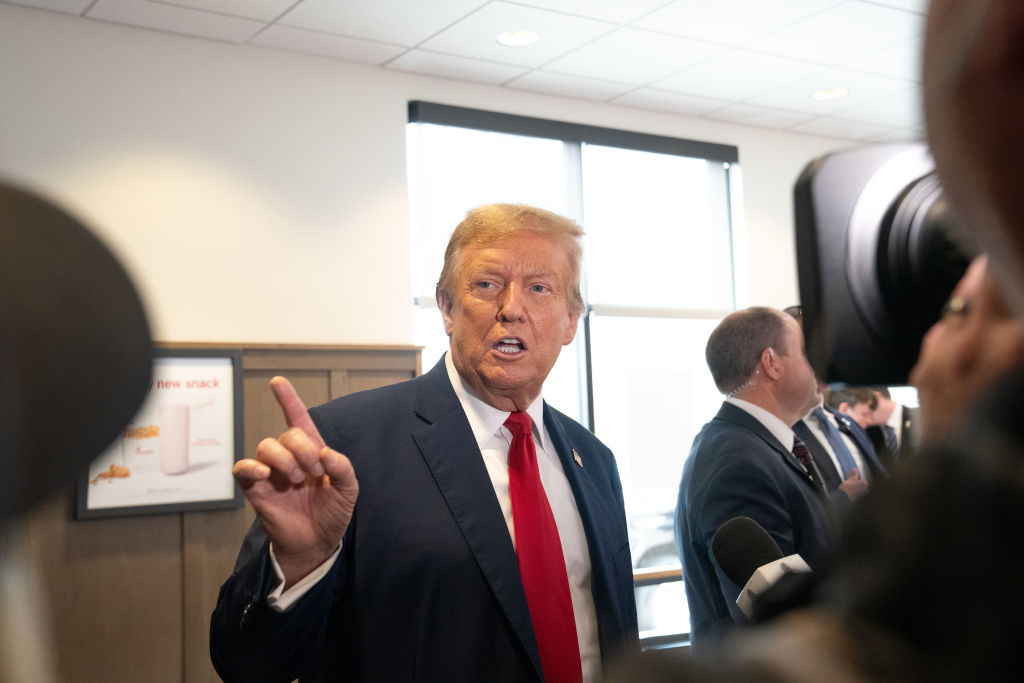The advent of Donald Trump’s second presidency has brought a considerable level of disruption to US foreign policy in a very short space of time. Some of it is actual policy that is being implemented right now, such as the negotiations with Russia or the 20 per cent tariffs on Chinese goods and the global steel and aluminium tariffs at 25 per cent. But most of the shake-up consists, so far, of just noise and panic in reaction to US presidential rhetoric rather than actual, definitive policy decisions about anything.
The global game of “reading the runes” and “interpreting White House signs” is now in high season and played in earnest across chancelleries, ministries of foreign affairs, policy shops and of course the global press. All of this is understandable. After all, it is prudent to not just take note of the intent projected by the US administration, but to take public statements from Trump and his close team seriously and consider them at face value.
But from this to drawing big and final conclusions about what will actually happen in US foreign policy, is a rather long way. Unfortunately, many people – especially those with a pre-existing bias against Trump and MAGA, and/or with a longstanding resentment of overweening American power – are very keen to close that “gap” between what Trump says and what Trump does, very quickly.
Often, as in the case of many Europeans, this is because it serves their interests and furthers their agenda of “more Europe”. This old obsession of Europe’s power elites can now be presented as the only game in town to European publics that are fed constant scare-stories about what the monstrous America Firsters might be prepared to do, especially in “alliance” –apparently – with Putin.
The anti-US propaganda is so bad that the vice-chair of Romania’s state media watchdog, Valentin Jucan, has taken to talking publicly about the need for the “denazification of the United States”. Much more of this vicious anti-American rhetoric – albeit rarely with such high-level official sanction as in EU and NATO-member Romania, a country which has recently gone rogue – can be found across social and mass media, in Europe and beyond.
It’s as if the world has not already been through an entire Trump presidency before, in 2016-2020, and has not had the chance to witness the distance that often occurs and remains between Trump’s rhetoric and his actions. Again, none of this means that it cannot or will not be different this time. The worst of Trump’s stated or implied intentions might yet come to pass . But, so far, the evidence is lacking.
For all the (rather odd) Trump talk about bringing Canada and Greenland under some form of US control, no actual steps in that direction have been taken, either in practice or in law. Earlier reports of the US military pulling out of NATO exercises have been disproven. B-52 deployments (America’s strategic nuclear-capable bomber) to Europe have continued, including a particularly aggressive flight right up to the Russian border.
Hardly any trade threats targeted at allies have materialised. Talks on reciprocal tariffs are ongoing and a 2nd of April deadline looms, but no specific tariffs have yet been imposed on the EU or any other allies apart from Canada and Mexico, and even those benefit from exemptions for goods covered by the USMCA trade deal, which cover the majority of their trade with the US. Besides, Canada and Mexico are special cases, as they are deeply entwined with domestic US politics over fentanyl and migrants pouring into the US across its northern and southern borders.
The torrent of Trump administration-related news – much of it related to US domestic affairs – together with the hysterical commentary generated in response across the world but especially in allied countries, makes it difficult to discern exactly what is the real direction of travel for American foreign policy, or even what its critics think it is.
There is a current of opinion that reads Trump’s policy as a decisive turn towards full isolationism, i.e. an abandonment of all major foreign interests. This would be an America that brings the troops home, closes down overseas bases, and retreats behind its two oceans in an almost complete reversion to what actually was the US foreign policy consensus pre-WWII.
A view that is only slightly less radical sees America now aiming for a kind of hemispheric retrenchment; this would still imply breaking off from Europe and the Middle East, but “only” in order to consolidate defences in the Americas and enhance US hegemony in its own back yard. In this case, the US would be interested in striking grand bargains with Russia and perhaps China, if possible, in order to carve up the world into spheres of interest.
Neither of these scenarios or interpretations square well with the observable facts so far. Part of the problem, of course, is that what constitutes a “fact” of US foreign policy in the current climate is a disputed question. The most objective facts actually point to continuity in US policy under Trump, a US policy win in getting Europe into a real rearmament mode, and a restatement of US military power in the world.
Examples include the strikes on the Houthis in Yemen (whose military significance “Signal Gate” is now obscuring) as well as a number of other US military operations against terrorists in Somalia, Iraq and Syria, all since Trump took office. Under Trump, the US is also now escalating its support for Israel, including through the transfer of previously-withheld heavy bombs. All of this is squarely against the MAGA ethos of getting the US out of the Middle East, and is already being criticised as a betrayal of America First. If US isolationism is on the cards, we are yet to see any actual hard evidence of it, beyond “words”.
Much of the confusion and hyperbolae about how the “world as we know it” is about to change dramatically – that is, much of the misreading of the situation – is because of the Ukraine peace talks. Any negotiation of this magnitude – in historical importance and stakes, but also in complexity and difficulty – is bound to distort “outsider” perceptions.
The primary concern of the parties is to manipulate the entire environment around the negotiations in order to achieve their goals, rather than protect allies’ feelings. Indeed, if hurting allies’ feelings and “triggering” certain reactions helps in the broader negotiating strategy, then that would be an advisable course of action. The Oval Office scene, or the on/off switching of intelligence to Ukraine might be relevant examples here.
It is too early to draw definitive conclusions about US foreign policy based on what we have seen so far in the Ukraine-US-Russia talks. Even what some think they already know about top-level aspects of US strategy going forward – e.g. the idea of the US now being entirely unreliable as a NATO ally, and the notion that Europe is now “on its own” – will only be speculation, and a rather tenuous one at that, until the actual results come in.
Of course, prudent policy must anticipate likely problems; but equally, it must not foreclose options and step into unknown territory until the necessity for it becomes absolutely clear. Allies who hold their nerve while everyone else heads for the cliff, might win in the longer term – bigly.






Political polarisation and US foreign policy